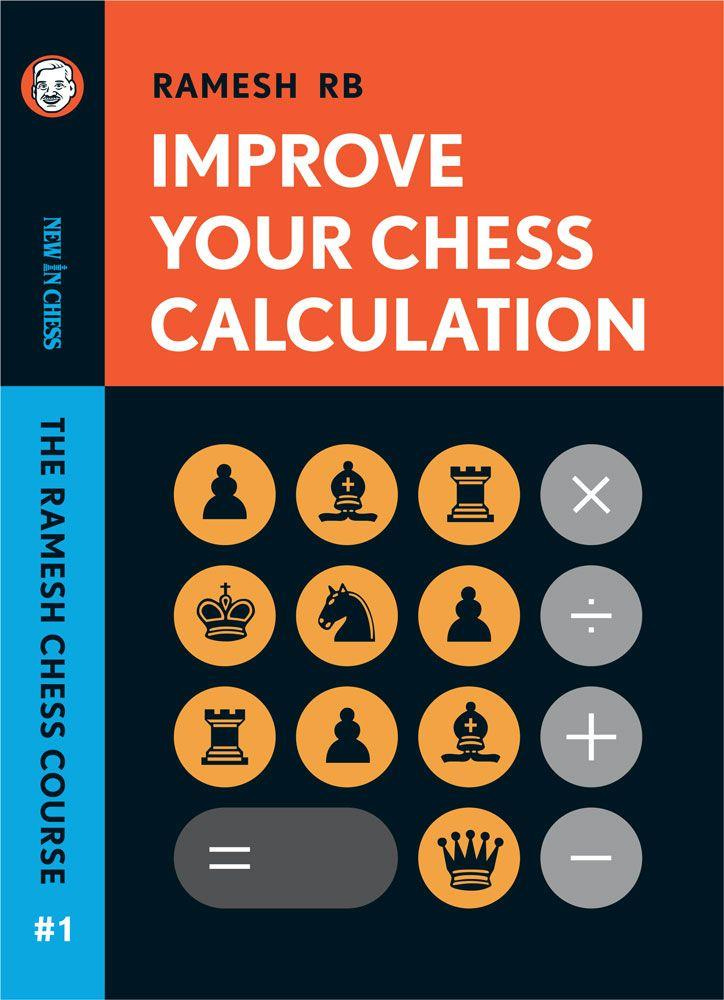Chess Calculation Insights From GM RB Ramesh
A review of the core teachings of Improve Your Calculation
Before Christmas, I took part in the Chesspunks tournament hosted by Neal Bruce and Chessable. I managed to end up winning some prize money that I converted to Chessable courses. I picked up a lot of calculation courses. One of them was ‘Improve Your Chess Calculation’ by RB Ramesh.
This book has gotten a lot of praise and I always find Ramesh’s thoughts on chess training interesting. The book has by many been marked as an advanced book for +2200 FIDE-rated players, so I have not (yet) begun solving it. If you want a good review, check out IM Andras Toth.
However, I was curious to read his advice for improving at calculation, since it is something I work to facilitate with The Chess Gym and the just published tactics series The Tactics Ladder.
I have therefore read the written material of the book and tried to summarise it and share some key quotes for you.
My notes from Improve Your Chess Calculation
Dynamic and static positions
Mastery of both types of positions is crucial. "A good chess player should be able to handle both dynamic and static positions equally well," Ramesh states, highlighting the necessity of flexibility and adaptability in your style. Players need to be able to handle all positions.Calculation and visualization
For Ramesh visualization is very important and connected to the ability to improve at calculation. "The farther from the starting position a player can go, the better his calculation skill will be. Without making progress on visualisation skills, it is impossible to make progress in calculation skills." emphasizing the critical role of being able to see the game in your mind's eye. He strongly recommends not moving the pieces when solving a position.Mastering forcing moves
Ramesh advises focusing on forcing moves—checks, captures, and threats—as they are "One of the quickest ways to improve calculation is by learning to calculate forcing moves quickly and correctly."Solving studies
Studies are essential. "Solving studies very soon became one of my favourite methods. Whenever I feel my student's calculation skills are not up to the mark, I will make them solve studies for three to four hours a day for around three to five days in a row. Usually, the students will show significant improvement in their calculation skills. Choosing the appropriate level of studies is critical in this regard." Ramesh underscores the effectiveness of this practice in sharpening calculation abilities.Focus on the process
Awareness and correction of common mistakes are key. "Learning happens when we focus on the process, rather than on the outcome. It is essential to go to the depth of an issue, rather than being satisfied with the explanation on the surface, and to search for what is beyond the obvious and visible to the naked eye. We should be a seeker of truth with single-minded devotion." Furthermore, Ramesh adds “Our work should improve our ability to analyse any position efficiently and take correct decisions. Instead of preparing only to achieve our target, like titles, rating etc., we should also prepare to improve our analytical skills.”Training should be hard
“If you see the YouTube video where Usain Bolt trains for his competitions, he ties stones to his legs, runs in sand, and pushes his body to its limits in training. But in actual competition, he does not tie stones to his legs nor runs in sand. When we train in more challenging circumstances, push ourselves to do difficult things, and get used to a new level of toughness, our capacity and capability to handle difficult situations increase.” I think many adult improvers tend to make training easier by using hints, smart reading apps, and assistance to make training easier than when they play OTB.
When Ramesh writes about giving his students the task of solving studies 3-4 hours each day most adults cannot manage or survive this, but the Indian approach to discipline and hard work seems to be paying off.
I do not know how many of the juniors Ramesh has coached besides Praggnanandhaa, but it is my impression that the attitude towards working hard on chess calculation also applies to the other Indian juniors.
Alignment with The Chess Gym Principles
At The Chess Gym, we have applied much of the above advice, so I’m quite happy that we have an alignment in approaches. We focus on the process instead of rating goals with an emphasis on calculation and sharpening analytical skills with the daily positions, we do not give hints or themes for the positions to help.
The harder daily positions include endgame studies and you will practice your analytical skills in weekly sparring games and post-mortems.
Here is a hard position of the day from The Chess Gym:
We know that most adults cannot replicate the full training of an Indian prodigy, but we can work on the same core principles and make them a daily habit.
Thank you for taking the time to read this newsletter. I hope it has inspired you to push your limits a little further.
/Martin





Thanks for such a well detailed write up and explanation as to what is in the book as well as how it relates to the Chess Gym Principles. It is certainly on my wish list of books and Chessable courses.
I started this book and some of the exercises are quite difficult for me to solve and I tried to do them without the board. I think you might not even need to solve the problems, but only follow the whole sequence in your head to improve visualization if you're under 2200.